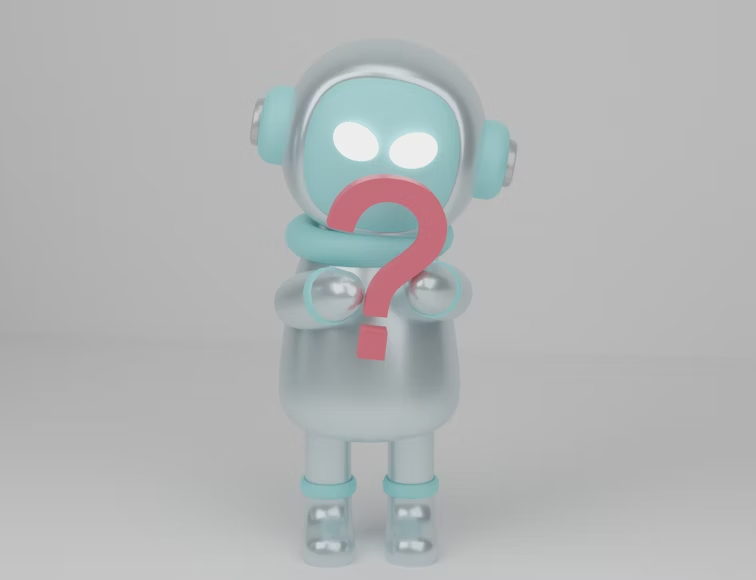
From data to delusion: How AI hallucinations actually happen
Darryl Linington 👁 Published 🇪🇸 🇵🇹 ...
What’s a hallucination? In AI terms, anyway
So, here’s the deal. You ask your chatbot something. It gives you an answer that sounds smart, uses all the right words, even throws in a citation or two. Then you look it up and its complete fiction.
Welcome to the wonderful world of AI hallucinations.
This isn’t a bug. It’s not your fault. And no, the AI isn’t “trying to lie.” It’s just... doing what it was designed to do: string together words that statistically seem like they belong next to each other. That’s it.
It’s not “thinking.” It’s playing mad libs.
These language models - ChatGPT, Claude, Gemini, all of them - don’t understand facts. They don’t know anything. They’ve read billions of words and now they’re playing this never-ending autocomplete game. That’s really all they do.
So, what happens when there’s a gap in what they’ve "seen" during training? They guess. Sometimes wildly. But always confidently.
Here’s how the mess actually happens under the hood
Large Language Models (LLMs) are trained on staggering amounts of text - think books, websites, Reddit rants, academic journals, all mashed together in a blender. The model doesn't “remember” this information the way we do. Instead, it learns patterns: which words tend to follow other words, which concepts often appear together, what sentence structures look “correct,” and so on.
When you type a prompt, the model starts predicting, one token (piece of a word) at a time. It doesn’t plan a paragraph or check if what it's saying is factual. It’s trying to string together a statistically likely response... no awareness, no checking, no conscience.
Now, if the training data didn’t cover your question properly - or it did, but the model doesn’t quite “recall” it - things get dicey. It may start inferring the answer based on similar-sounding things. Think of it like autocomplete on steroids, just inventing connections.
Example? If you ask about a court case that sounds familiar, the model might blend details from similar cases it saw during training. Suddenly, you get a Frankenstein ruling from a judge who doesn’t exist about a law that was never passed.
The problem? It doesn’t know it’s wrong. It wasn’t built to know. It was built to guess.
Some common ways this goes off the rails:
- There's not enough data on the topic → AI fills in the blanks with nonsense.
- You ask it a vague or complicated question → it invents a clean-sounding answer to look helpful.
- It wants to sound smart → so it mimics the way smart people write, even if it’s making it all up.
- It’s seen a million citations → so it formats fake ones beautifully.
This isn’t hypothetical - people have been burned
You’ve probably seen this in action already. But if not, here’s what it looks like:
- Fake academic studies: Looks real. Has authors, a title, a journal. Doesn’t exist.
- Imaginary court cases: Real lawyers have submitted these in filings. Judges were... not thrilled.
- Made-up medical advice: The bot might tell you kale interacts with ibuprofen. It doesn’t. (Probably.)
And yes, people believe this stuff. Because it sounds right. That’s the trap.
It can even gaslight you
And here’s the real kicker: if you push back? Ask it, “Are you sure?” The AI might double down. Rephrase the lie. Soften it. Cite another fake source. It’s not being malicious, it literally just doesn’t know better. It thinks, “Oh, you want a better-sounding version of that last hallucination? Say no more.”
Welcome to the gaslight parade, now with citations.
What’s being done about it (besides handwringing)
To be fair, developers are trying to fix it. No one wants their tool to be known for confidently spouting lies. Here’s what’s in play:
1. Human-in-the-loop training (RLHF)
Basically: real people give feedback on the AI’s answers, scoring them like bad Yelp reviews. Helps, sort of.
2. Letting the AI “look stuff up” (RAG)
Instead of relying only on memory, some models now pull data live from Wikipedia or knowledge bases. It’s like giving the intern internet access instead of letting them guess.
3. Fact-checking add-ons
Some platforms bolt on fact-checkers or refuse to answer if the AI isn’t sure. This is new and still a bit hit-or-miss.
4. Smarter prompts = less BS
If you ask a clear, specific question, you’re less likely to get AI improvisation theatre. Example: “Give me five peer-reviewed sources on Dragon fruit benefits” is better than “Is Dragon fruit healthy?”
5. Confidence filters
Some AIs will now say “I’m not sure about that” instead of making something up. Which, honestly, is a relief.
Why this isn’t just a funny quirk
This stuff matters. A hallucination in casual conversation is whatever. But in court? In a newsroom? In a hospital? It's a mess.
Imagine a student getting flagged for plagiarism because the AI invented a source. Or a patient getting bad advice. Or a business decision made based on a piece of stats the bot pulled from thin air.
These models are being built into search engines and business tools. The risk is already here.
Final word
Look, AI’s amazing. It can help you brainstorm, summarize, rewrite, translate... you name it. But never forget it doesn’t know what it’s saying. It just wants to sound convincing.
If you wouldn’t trust a smooth-talking stranger at a bar who “read something once”, don’t blindly trust your chatbot, either.
Use it. But fact-check everything. Always.
Because when it’s wrong, it won’t hesitate. It’ll just pop through a laughing Emoji and keep on talking.
Source(s)
Own research and experience
Image source: Valeria Nikitina - Unsplash







